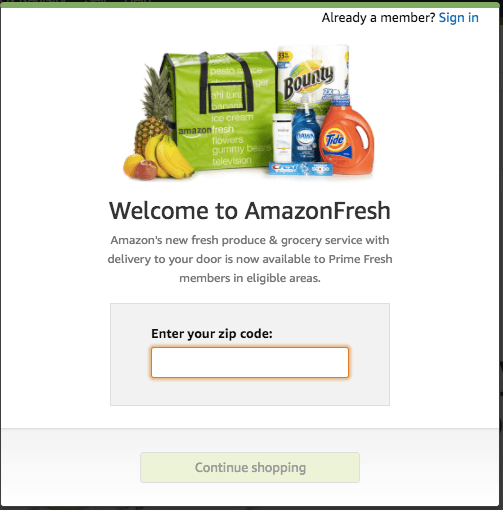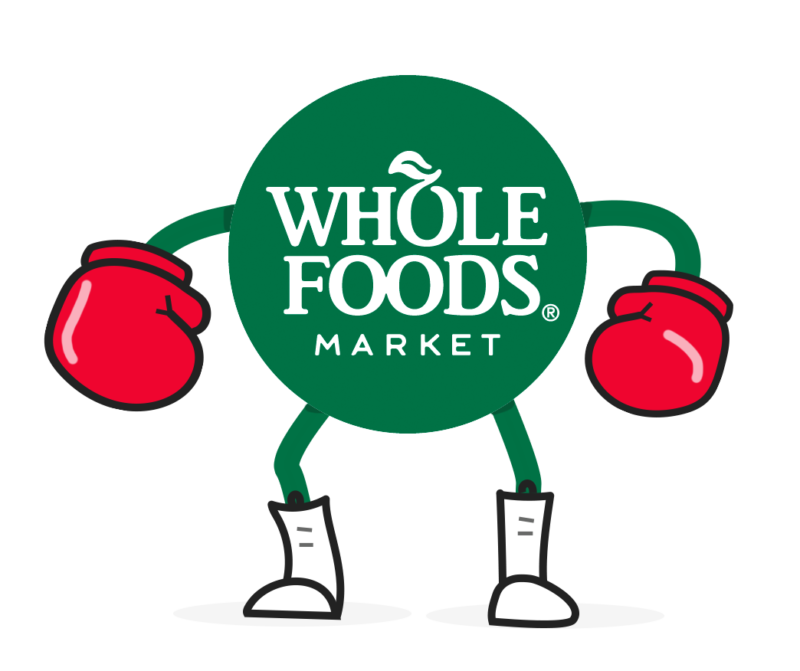
Selling groceries whether offline or online is now likely to be more complicated due to Amazon’s intended purchase of Whole Foods.
In the June 23, 2017 Forbes article “Amazon Buys Whole Foods. Now What? The Story Behind The Story”, Bruno Aziza says:
In a move that surprised many last week, Amazon announced its intention to purchase Whole Foods for $13.7B in cash. Amazon had been dabbling with traditional brick-and-mortar activities for a few years already – from owning a few physical stores to running experiments like “Amazon Fresh” and “Amazon Go.”
When the news broke last week, critics saw it as a sign that the company had finally caved and made a large investment into physical stores in order to grow. What many didn’t see, however, is that this acquisition is, in fact, in complete alignment with Amazon’s view of the world of retail.
According to a recent survey of chief data executives, 47% of them believe that their firms are at risk of major disruption in the next decade. That disruption will most likely come from Data. And Amazon is using Data to reverse-engineer retail in a way that might change it forever.
Aziza goes on to say later in the article that as Whole Foods has “460 locations and a history of highly localized habits, Amazon will benefit from a trove of Data that it can mine to write the future.”

While the acquisition of additional data to feed the Amazon behemoth is an important competitive advantage for Amazon’s retail efforts, an equally important concern is how Amazon’s deeper dive into the grocery business with the planned purchase of Whole Foods may impact sales of other grocery suppliers.
If you build it will they come?
Even if Amazon’s deal to buy Whole Foods goes through, will people switch from their current grocery suppliers (whether online or offline) to Amazon?
In this video from Barron’s, reporter Sonia Talati says that if the deal goes through “some 70% of Americans will be within a one-hour drive of an Amazon location.” Given that Amazon could now deliver groceries more quickly, Talati asked people whether that was enough to consider Amazon as their grocer?
Danielle Paquette’s July 17, 2017 Washington Post article “Why this group is trying to stop Amazon from buying Whole Foods”
Marc Perrone, president of the United Food and Commercial Workers International Union, sees Amazon the way some Rust Belt workers see global trade — as a threat to American jobs.
So on Monday, Perrone plans to file a complaint to the Federal Trade Commission, arguing that letting Amazon buy Whole Foods would trigger a wave of store closures and eventually quash customer choice.
“Amazon’s reach will ultimately reduce the number of grocery competitors that consumers can choose from,” he wrote in the complaint. “Regardless of whether Amazon has an actual Whole Foods grocery store near a competitor, their online model and size allows them to unfairly compete with every single grocery store in the nation.”
Click here to read “Standing Up to the Amazon Behemoth.”
Amazon Fresh
Amazon currently has a grocery delivery program at this time only available to Prime members and only in certain cities. The Amazon website states:
AmazonFresh is a grocery delivery and pickup service available exclusively to Prime members in select cities. Prime members can get the benefits of AmazonFresh for an additional monthly membership fee of $14.99.

What role Amazon Fresh will play — if any — in a combined Whole Foods/Amazon combination remains to be seen.
And let’s not forget Amazon Go — Amazon’s own experiment with a cashier-less grocery store. Jimmy Kimmel spoofs Amazon Go in this December 8, 2016, video:
And here is the actual Amazon Go video from the Amazon website:
(At the initial writing of this post the only Amazon Go store is in Seattle, Washington, on the corner of 7th Avenue and Blanchard Street.)
Will Amazon and Whole Foods play nicely together?
Rick Wartzman’s June 26, 2017, Fortune article “Amazon and Whole Foods Are Headed for a Culture Clash” says:
Ever since Amazon announced earlier this month that it’s planning to buy Whole Foods for $13.7 billion, lots of people have been wondering whether robots will supplant many of the grocery chain’s 87,000 workers. The way I see it, though, Whole Foods employees should be worrying just as much about the impact of their fellow human beings from Amazon.
Largely overlooked in the discussion about the proposed acquisition is just how far apart these two corporate cultures are.

Sarah Nassauer’s July 19, 2017, article “Robots Are Replacing Workers Where You Shop” said:
As Amazon.com Inc. makes direct inroads into traditional retail with its plans to buy grocer Whole Foods Market Inc., Wal-Mart and other large retailers are under renewed pressure to invest heavily to keep up.
Economists say many retail jobs are ripe for automation. A 2015 report by Citi Research, co-authored with researchers from the Oxford Martin School, found that two-thirds of U.S. retail jobs are at “high risk” of disappearing by 2030.
Self-checkout lanes can replace cashiers. Autonomous vehicles could handle package delivery or warehouse inventory. Even more complex tasks like suggesting what toy or shirt a shopper might want could be handled by a computer with access to a shopper’s buying history, similar to what already happens online today.
With this kind of pressure on all retailers to keep up with behemoths such as Amazon, the added pressure of a Whole Foods/Amazon contribution can be alarming, especially for selling groceries.
Corey Tollefson says in the Entrepreneur.com July 27, 2017 article “The Small Business Guide to Thriving in the Amazon-Whole Foods Era”:
This June, Amazon triggered a tidal wave after announcing its plans to break into the $800 billion food and beverage industry with its purchase of Whole Foods. But, to the keen observer, this move comes as the inevitable next step in the escalation of digital retail — adding to the retail giant’s arsenal of products, locations and technology.
Amazon’s momentous investment in Whole Foods is a wake-up call for any grocery store that is not investing digitally and points to what all retailers need to master to succeed in today’s world: ease, efficiency and accountability.
Amazon may be the largest internet retail company in the world, accounting for over half the increase in U.S. e-commerce sales last year, but its decision to buy Whole Foods presents implications, lessons and significant opportunities for even the smallest retailers.
The looming threat to all store owners is clear: Adapt digitally or die.
Tollefson’s call to action of adapting digitally is important — and we look forward to discussing this important topic further in future blog posts.
For insights into the antitrust considerations of the intended Amazon purchase of Whole Foods see the antitrust section of our post “What Does the Launch of the Amazon Spark Social Media Platform Portend for U.S. Retailers?”